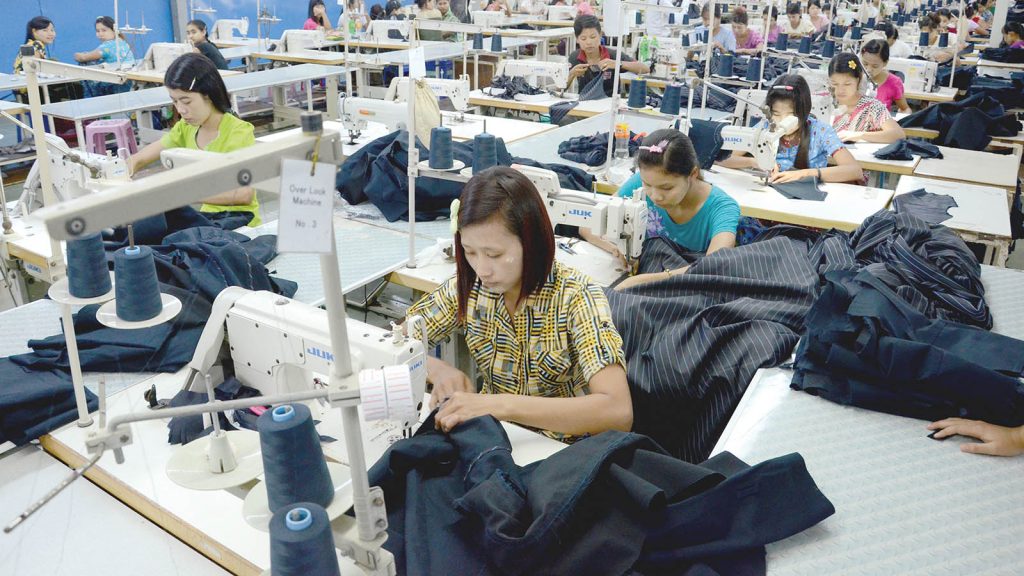23 June
Recently, it seems that there has been some misunderstanding in certain quarters about the “Unemployment” situation in Myanmar. As for the unemployment statistics quoted, it should be remembered that “Employment” and “Unemployment” percentages are in the context of the definition of the terms used in the surveys. In the “Labour Force, Child Labour and School-to-Work Transition Survey, 2015”, the two terms are defined as mentioned below:-

“Employment”: Persons in employment are defined as all those of working age who, during a reference period of seven days, were engaged in any activity to produce goods or provide
services for pay or profit. They comprise :
• Employed persons “at work”, i.e. who worked in a job for at least one hour,
• Employed persons “not at work” due to temporary absence from a job, or to working-time arrangements(such as shift work, flexitime and compensatory leave for overtime)
• Helping without pay in a household/family business
“Unemployment”: Persons in unemployment are defined as all those of working age who were not in employment, carried out activities to seek employment during a specified recent period and were currently available to take up employment given a job opportunity.
Hence the low unemployment percentage figures.
Regarding the employment situation:-
The Industrial Zones in the major cities are increasing in size with the addition of new factories and industrial establishments. Thus they are creating many jobs and hence increasing employment.
The Construction Industry is booming in all parts of the country and hence are providing jobs for many. Due to the construction of roads and bridges by both private and the Government, many jobs are created all over the country. In the aftermath of the Roads and Bridges construction, the Road Transportation Industry is helping to boost Trade and Tourism, all of which are providing jobs directly to many and creating job opportunities as well as self employment opportunities down the line.
Regarding trade with other countries, the mercantile marine trade has been increasing steadily and so has been the border trade with neighbouring countries thus increasing employment in the “Trade” sector.
The challenge for us rather, is not unemployment but “labour underutilization”. Many in the rural areas are not fully employed i.e they only work a few hours per day and that too not every day. A large proportion of such persons are unpaid family workers and hence do not earn direct wage incomes. That’s the case with most labour intensive agro-based countries. The labour underutilization figure according to the Report is around 6%.
As the major proportion of “under-utilized labour” is in the Agriculture, Livestock and Fisheries sectors, efforts are being made to address this problem through Rural Development Programs. It seems that now the Government has not left it entirely to the Government Rural Development Agency but is encouraging private public participation and development of rural economy including agro-based small and medium enterprises. These measures will of course need a certain “lead time” to become fully operational.
The Government’s land reform program is also a major venture which will give back land to the farmers. This will further boost agriculture production and in the long run, increase wage employment in agriculture. Such reforms will, in time, contribute to further economic growth and raise rural incomes.
The reason why many young persons migrate to other countries in search of jobs is not because of the lack of job opportunities here but , as every one knows, because of the high wages they can earn for the same type of jobs,( i.e. as mostly unskilled manual jobs) in the receiving country. Here I might add that labour out-migration in Myanmar is also partly due to the “help” of the illegal recruiters.
Economic development and creating jobs is not only the responsibility of the Government. The Government, based on policy decisions can define the Economic Development Goals and draw up indicative economic development plans. However, in a democratic country with a free market economy, it’s the responsibility of the private sector to be guided by these goals and plans in their economic activities. In fact it can be said that the private sector; whether in agriculture, manufacturing, trading or services; that primarily contributes to economic growth and job creation. The Government only has to help, facilitate and of course regulate the private sector so as to be in line with laid down policies and operate within the bounds of laws enacted by the Hluttaw as well as requirements under international laws.
By Lokethar


